A visit to Japan is a gastronomic delight.
It’s even more of a treat when you live in a meat-and-potatoes place like Germany, where abendbrot — bread and butter with cold cuts and cheese — is considered a brilliant supper innovation (‘It’s like breakfast…. without the muesli…!’).
I particularly miss the availability of fresh fish living in an inland city like Berlin. We get freshwater fish in the form of zander, a cross between a pike and a perch, as well as herring from the Baltic and farmed Norwegian salmon. But it doesn’t hold a candle to the fish we ate in Japan.
The day begins with baked fish, rice and miso soup for breakfast, and plunges into deeper waters from there.
A few of you wrote to ask what I ate on my latest visit. It’s difficult — and a little alarming — to keep track of, and it necessitated a brutally strict diet as soon as I got home.
I put together some photos to give you a sense of the sheer culinary variety a trip to Japan entails.
There’s the sort of dinner that involves a plethora of tiny tableware, like this meal I had with my wife’s family, complete with local sake:
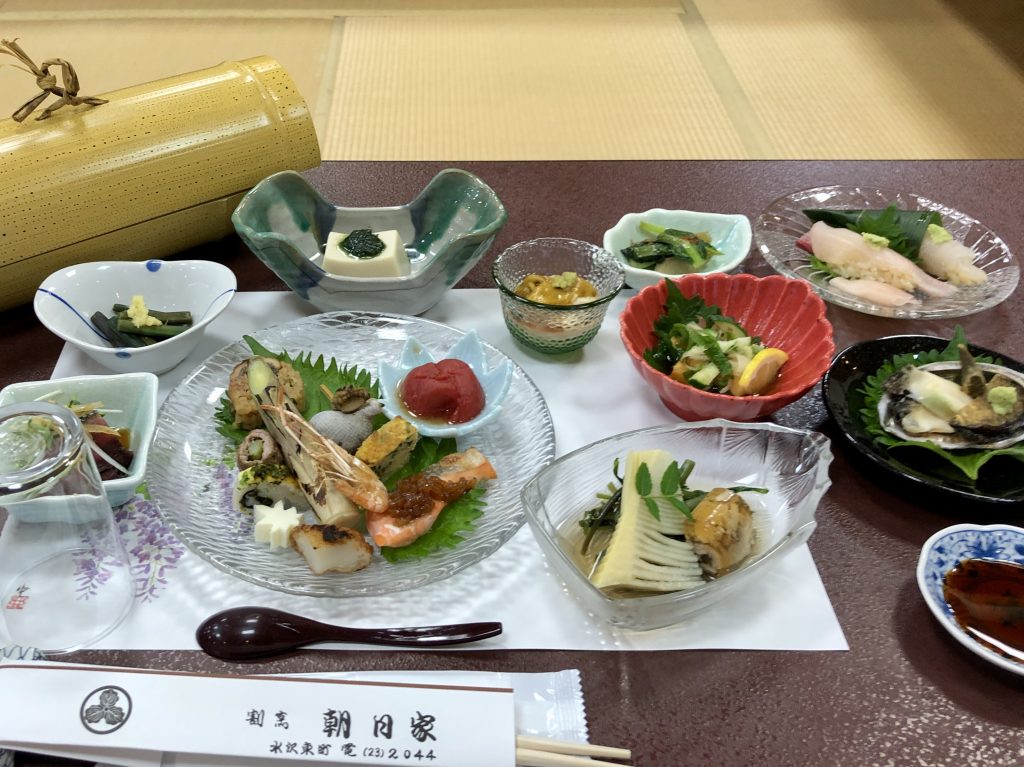
And no visit would be complete without a feed of sushi from a local place in my wife’s hometown:
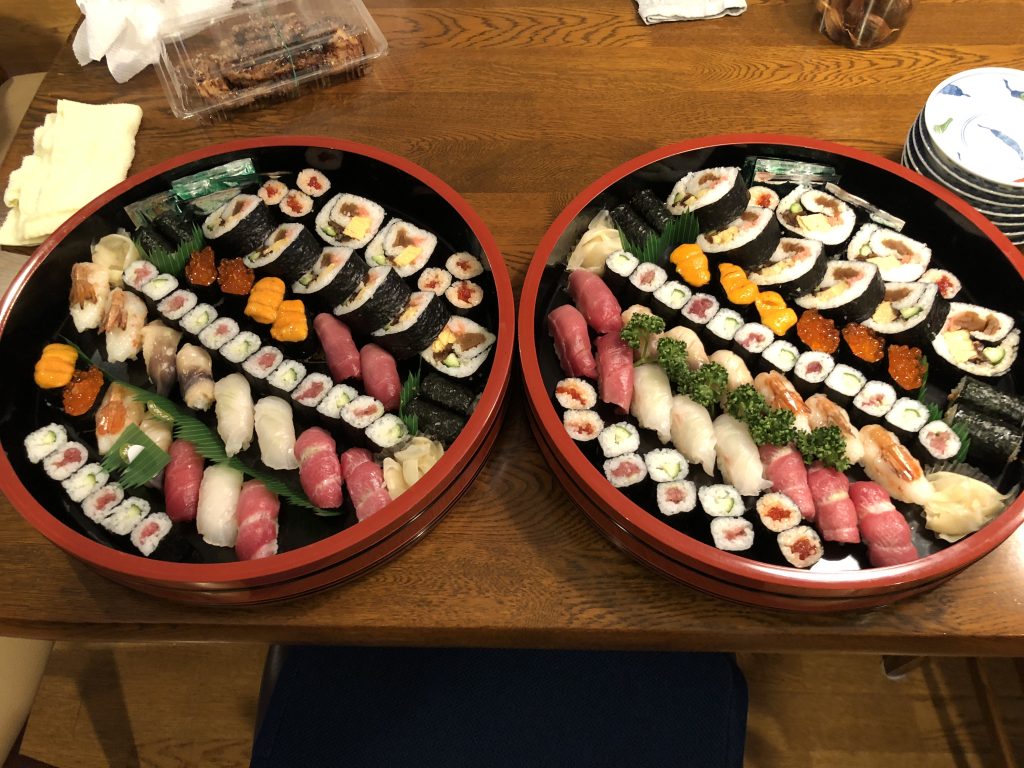
It comes wrapped in furoshiki, a cloth traditionally used for carrying things or for gifts. The two big sushi platters are washed out and returned to the shop afterwards:
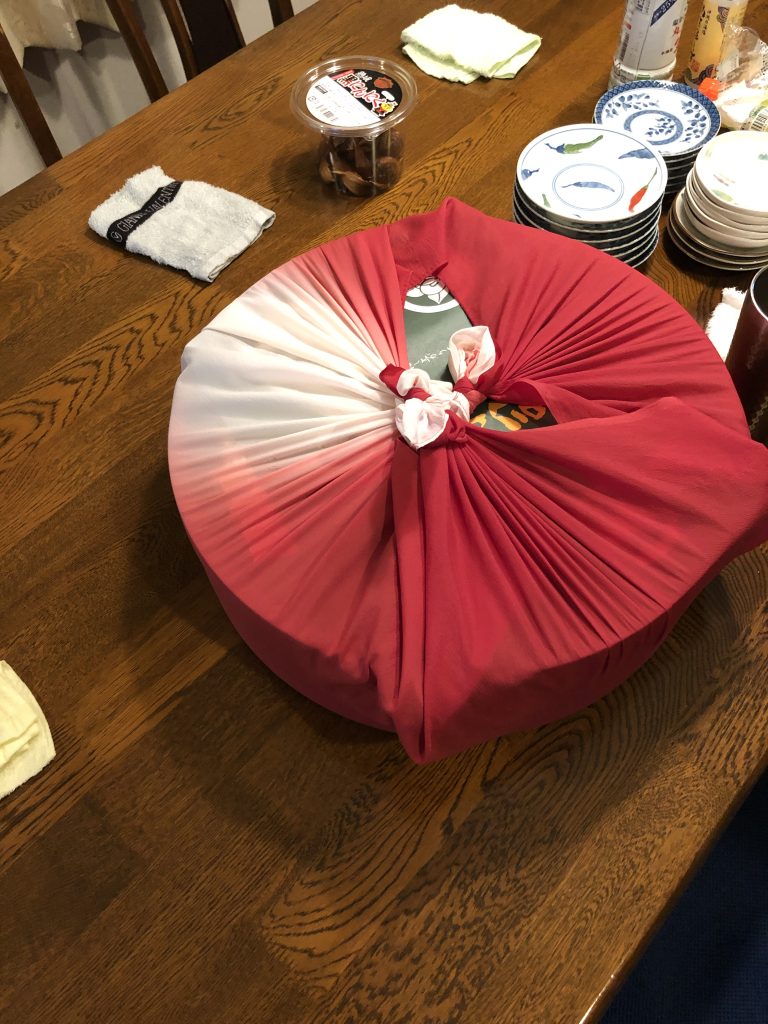
You won’t find sushi like that in Berlin! I don’t even bother eating it here. The few decent sushi spots are badly overpriced, and the rest are thoroughly mediocre, with the wrong rice and fish of questionable freshness. And they’re rarely ever run by Japanese people.
So yeah, I go for sushi every chance I get when in Japan.
Moving on.
We also get excellent meat in my wife’s home region, which is famous for Maesawa beef. Here are a couple pics from a local yakiniku (grilled meat) place where we grilled different cuts of beef — including liver and tongue — at our table:
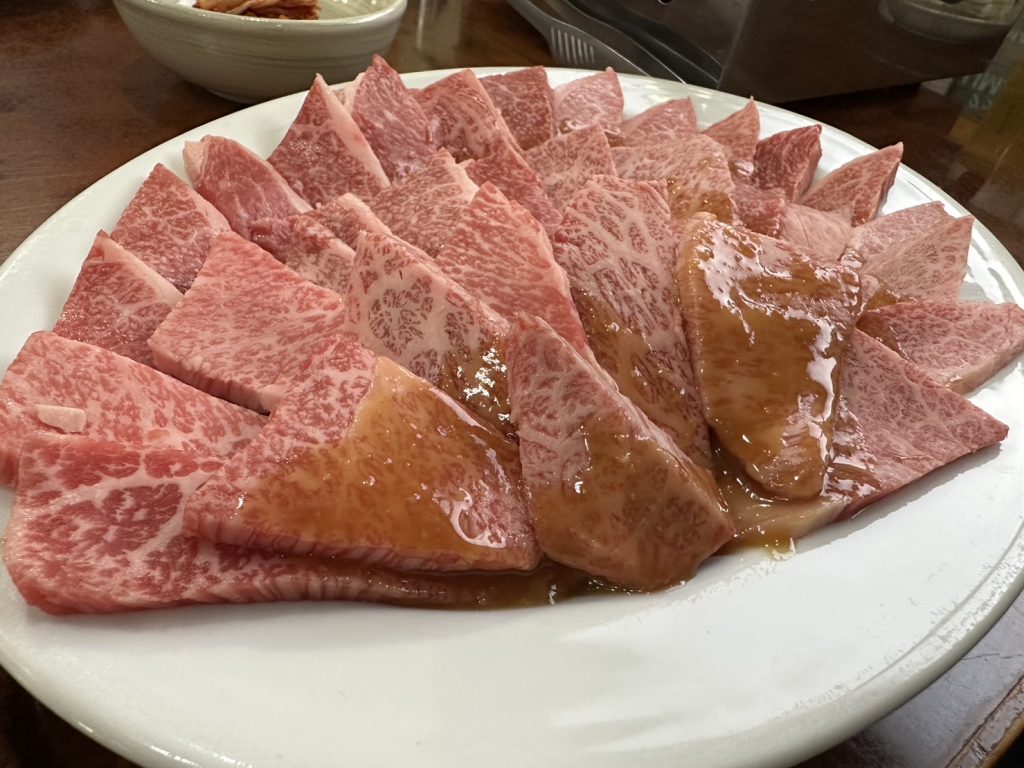
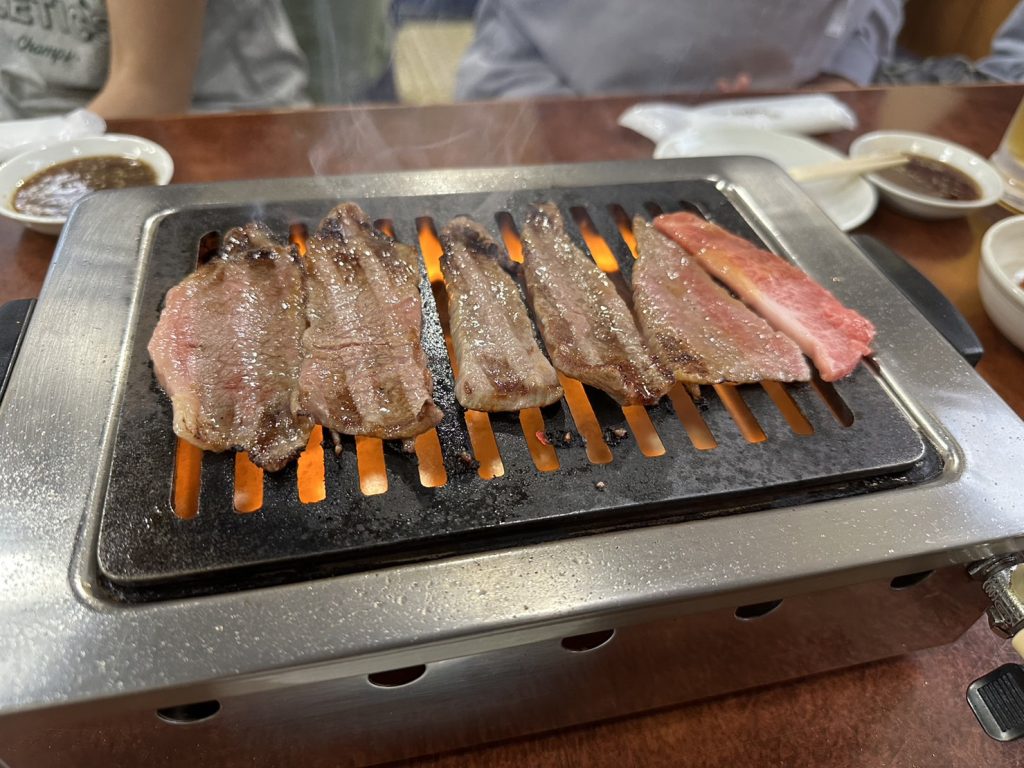
Those are a few of the hometown delights we enjoyed — and that’s aside from wonderful home cooking, and restaurant options like okonomiyaki (a sort of savoury grilled pancake with fish and meat):
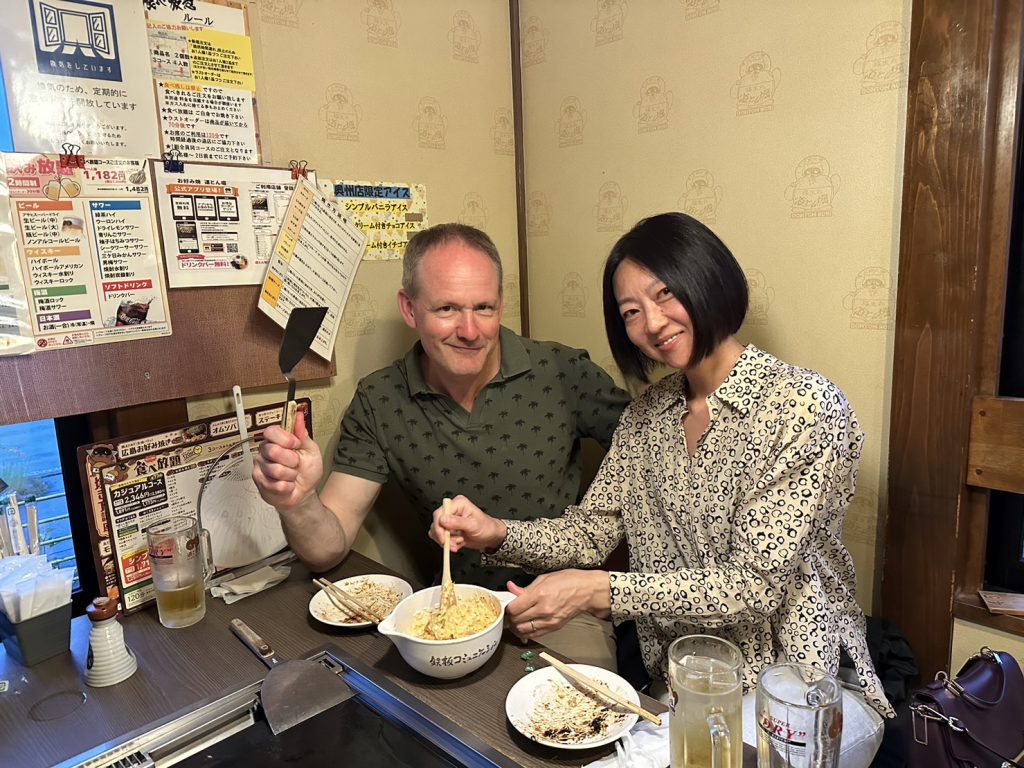
Seasonal foods are a big part of any visit to Japan.
Check out this lunch of local mountain vegetables we ate at Tamaki, a beautiful riverside spot in Yamagata prefecture:
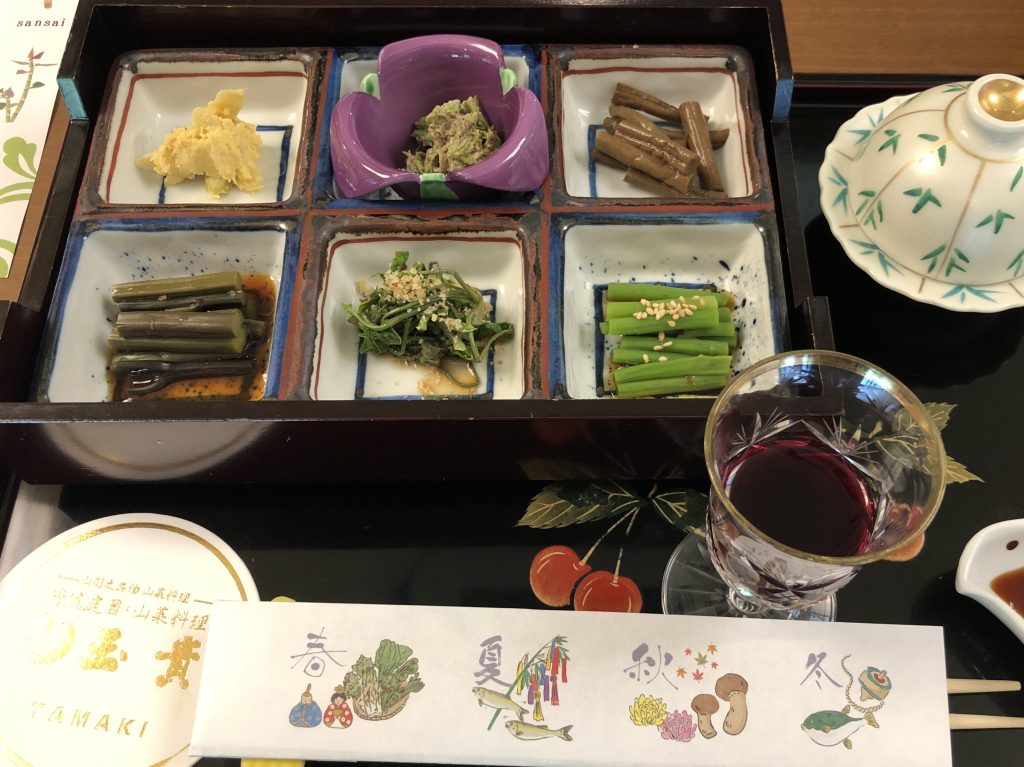
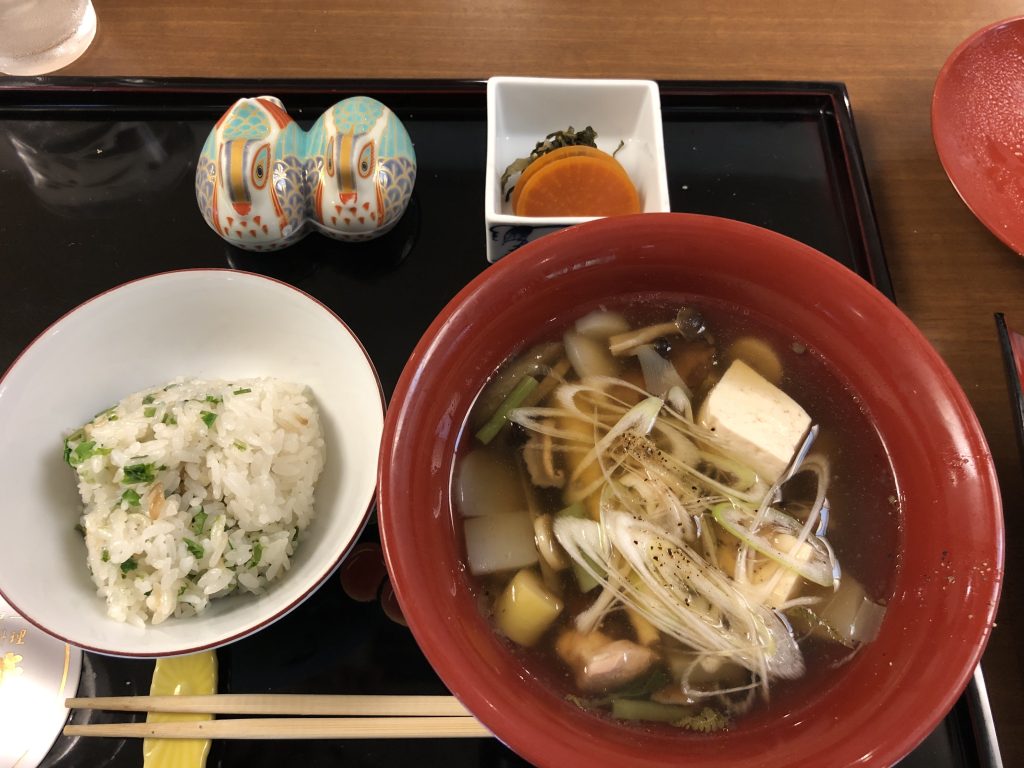
Hot spring visits also revolve around food.
Here’s a sample of just some of what we were served after a thoroughly scorching soak at Koyo onsen in Kaminoyama, Yamagata prefecture (for more about onsen, read this blog):
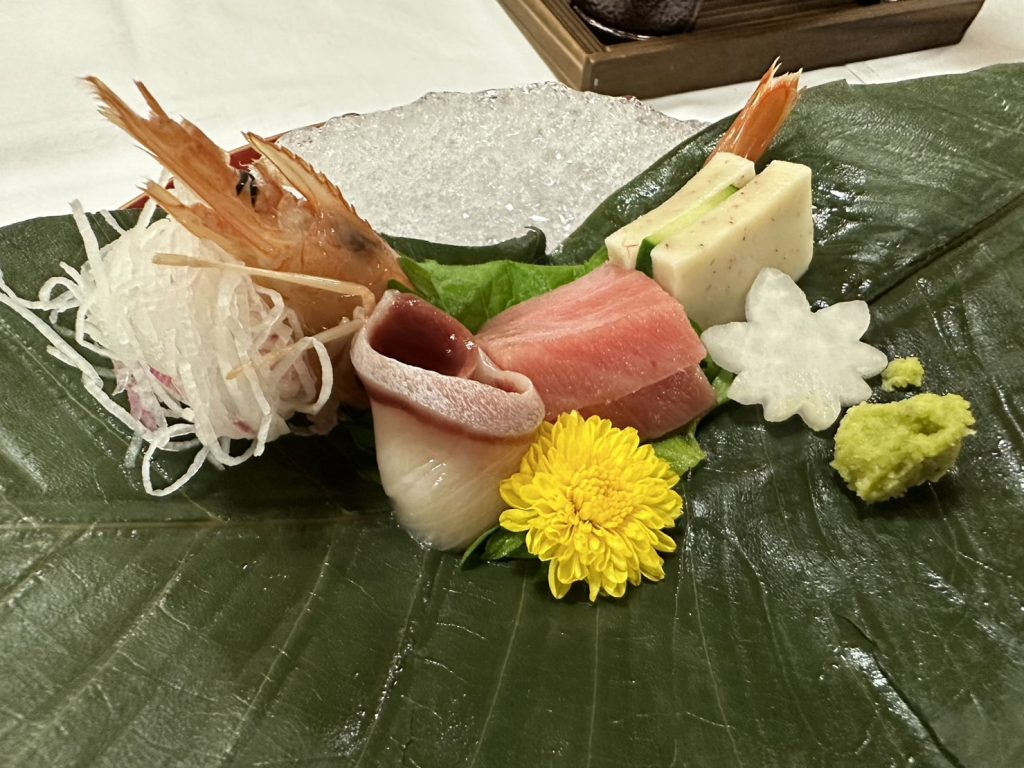
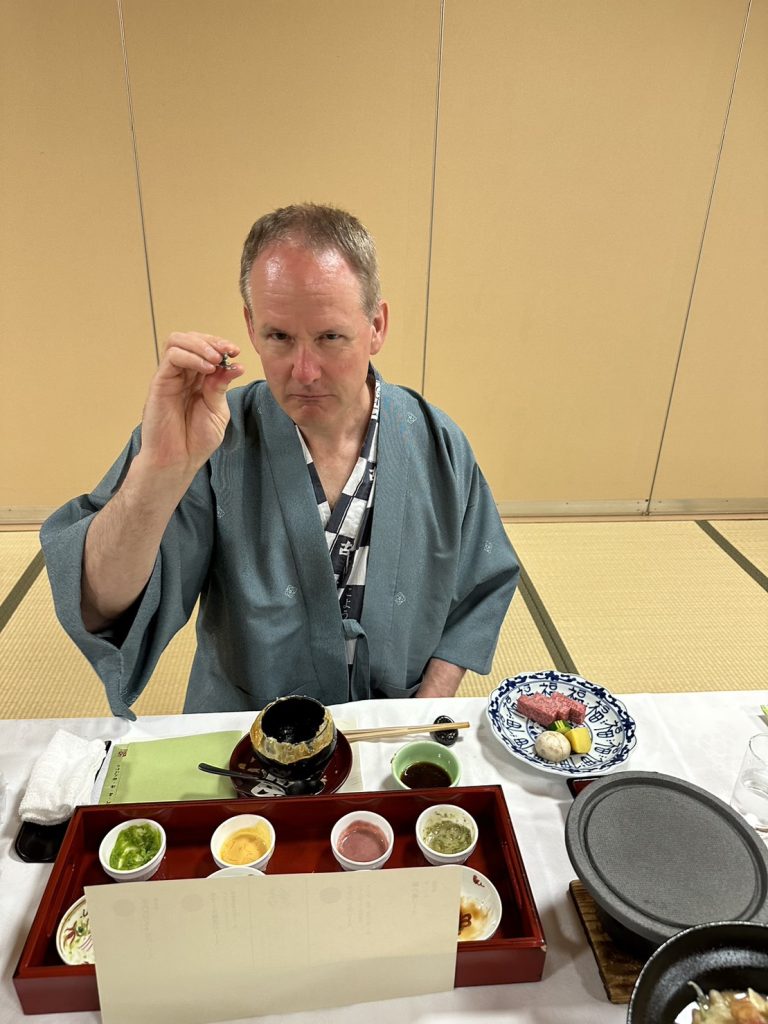
Regional foods are also a delight.
Here in Germany, visiting a different region means a different type of sausage and pilsner. But Japan is a long country that crosses many zones of latitude — some 3,000km roughly north to south, if you count all the islands. Even the railway station bento (lunch boxes) change from station to station.
We spent the last part of our visit in Tokyo catching up with friends.
That included a day trip to Kamakura, seat of Japan’s first military government (the Kamakura shogunate) from from 1185 to 1333. I was last there 23 years ago when living in Tokyo’s western suburbs.
Shirasu don (rice topped with tiny white fish) is one of many Kamakura regional specialties. I had some for lunch, along with soba (buckwheat noodles), tempura and lots of tofu-related dishes:
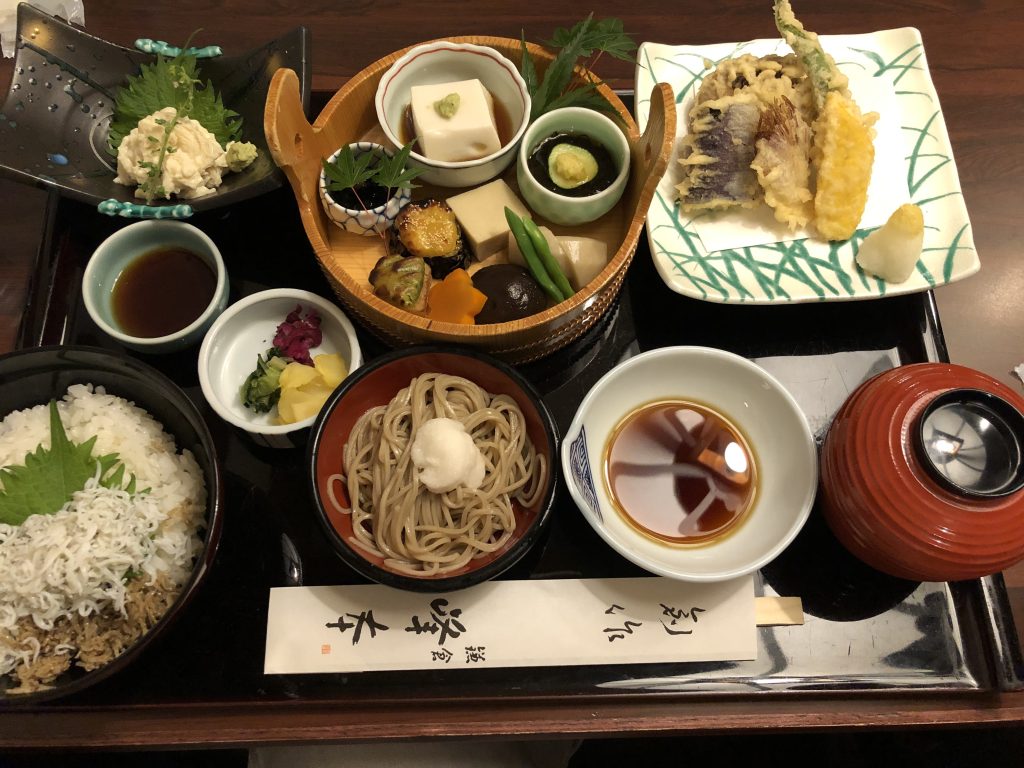
Noodles are another favourite option, and there’s lots to choose from: soba, udon (a thick noodle made from wheat flour), ramen (Chinese-style wheat noodles served in broth) and more. You can read about some of these varieties — plus my tips for eating well, even on the cheap — in this article I wrote for Outpost magazine.
I didn’t just overindulge in Japanese foods, either. Tokyo offers excellent cuisine from other parts of Asia, sometimes with a Japanese twist. Here’s a sample of Korean food from a back alley closet-sized place in Shin-Okubo, Tokyo’s Korea Town:
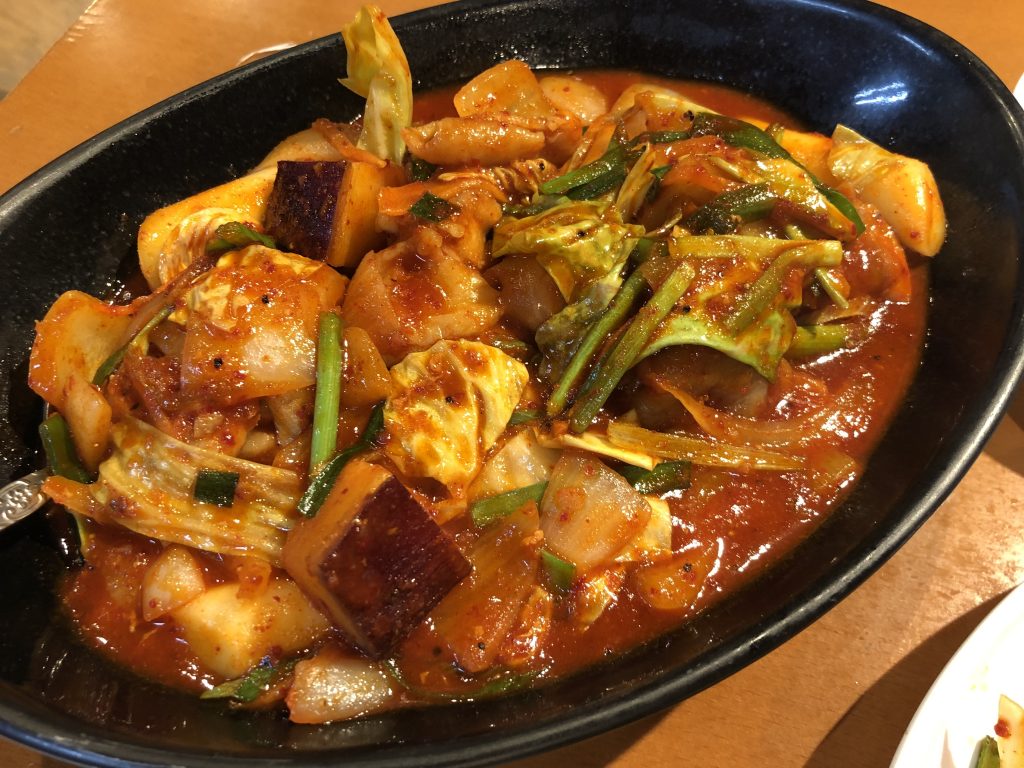
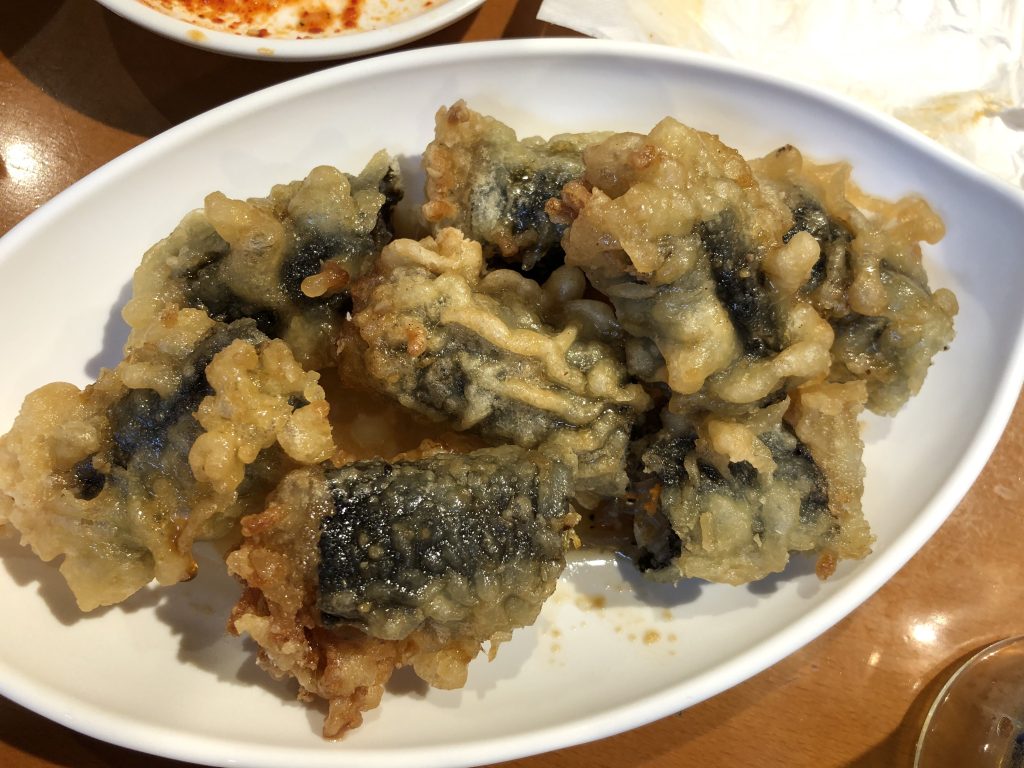
And the fiery hot mapo dofu we ate in Yokohama before hopping a train back to Tokyo, after an excellent long lunch with friends in Yokohama’s Chinatown:
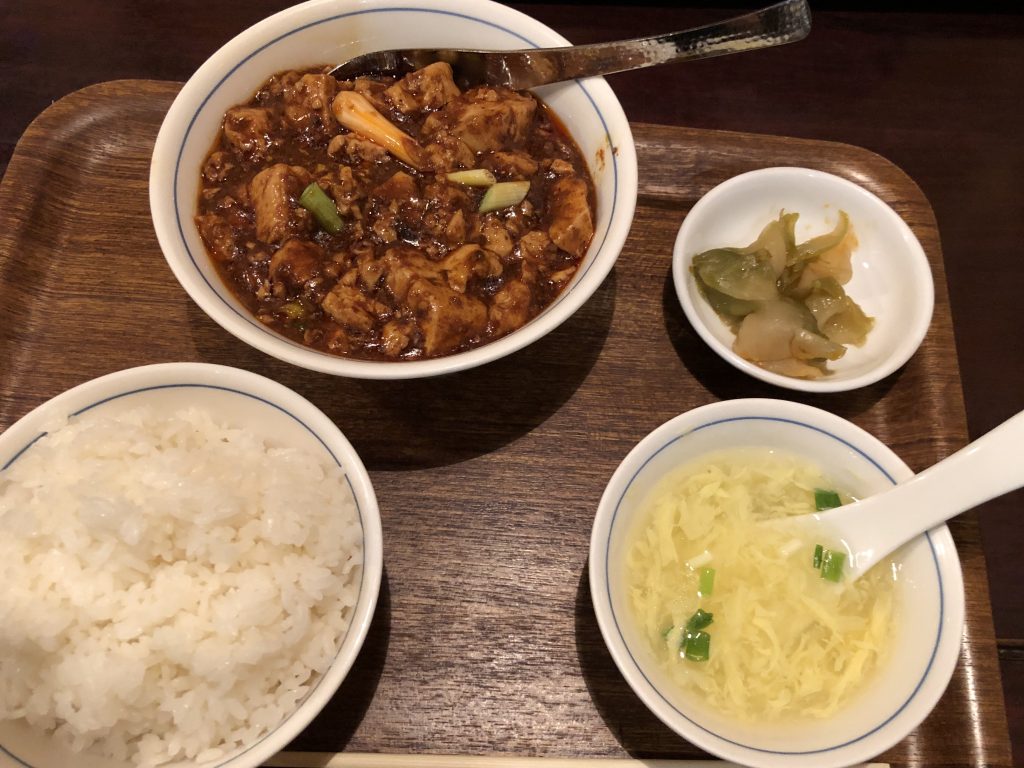
What of sweets? I’ve got that covered, too.
I’m a well known ice cream aficionado, and Japan is excellent on that front, with everything from macha (green tea) and goma (black sesame) soft serve to far stranger flavours.
Traditional Japanese sweets are even better. They aren’t loaded with sugar or chocolate, like the typical Western cake or pie. Instead, they use ingredients like azuki (sweet red beans) and mochi (glutinous rice cake) to create subtle flavours and textures that are totally addictive.
I recommend starting with taiyaki, a crisp baked fish-shaped cake filled with sweet red bean paste:
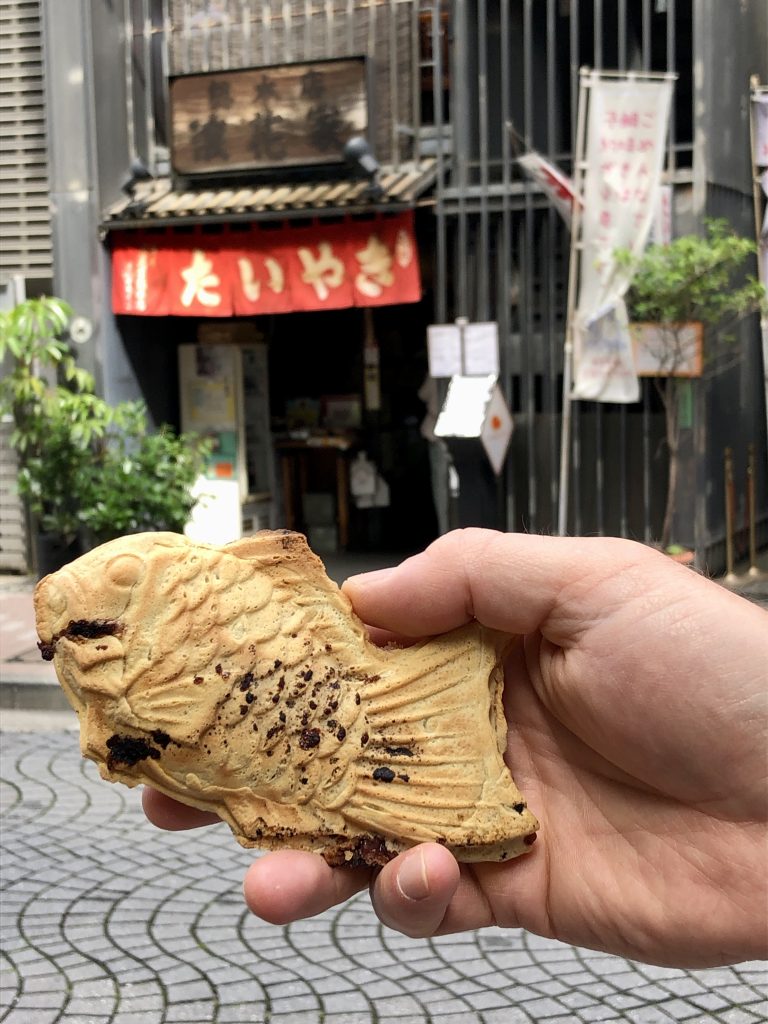
If you’re near the neighbourhood of Azabu-Juban, pop by Naniwa (est. 1909). it’s said to be the original maker of these traditional treats:
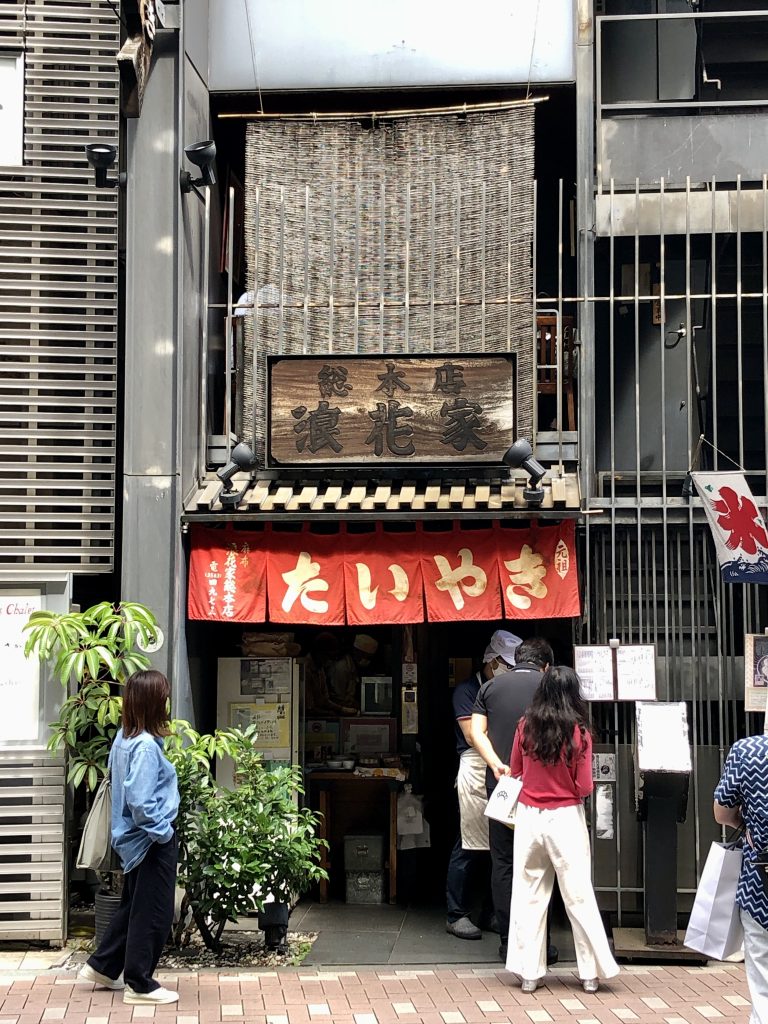
You’ll also want to try manju, yatsuhashi (thin triangle-shaped soft mochi wrappers filled with pureed red-bean paste), dorayaki and senbei. That’s enough to get you started.
And what of my last supper? No, it wasn’t bread and wine. I don’t have delusions of deification.
It could only be sushi. With an evening flight, we had just enough time to hop the subway to Tsukiji, home of the old fish market, for a proper binge at Sushi-dai:
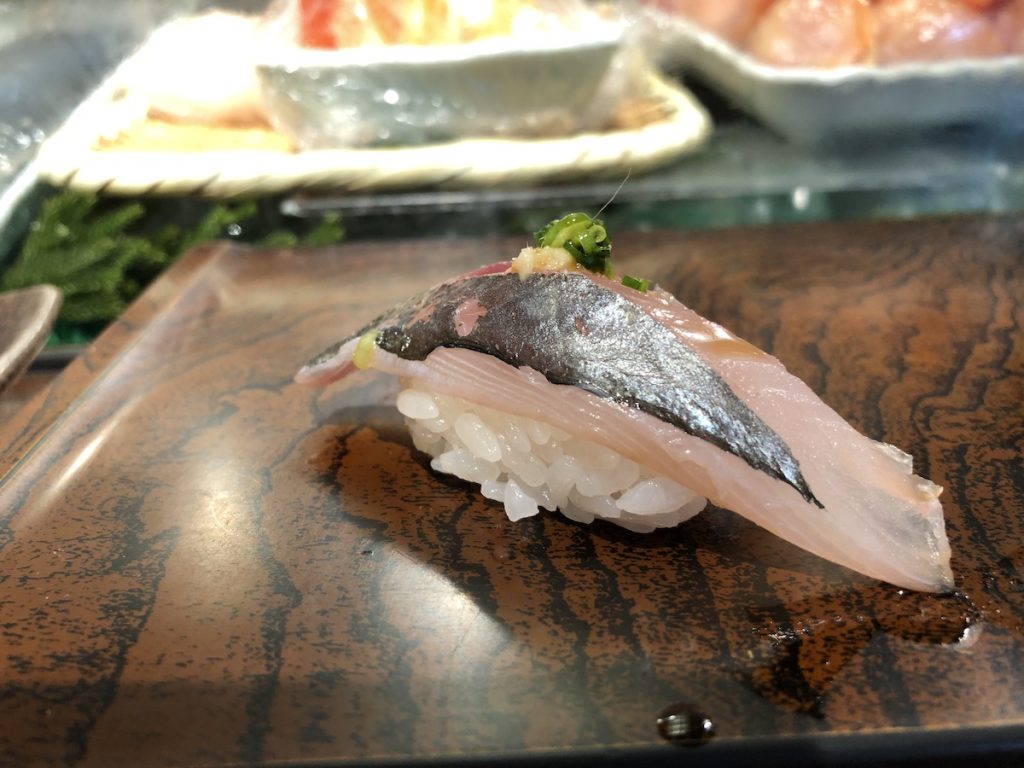
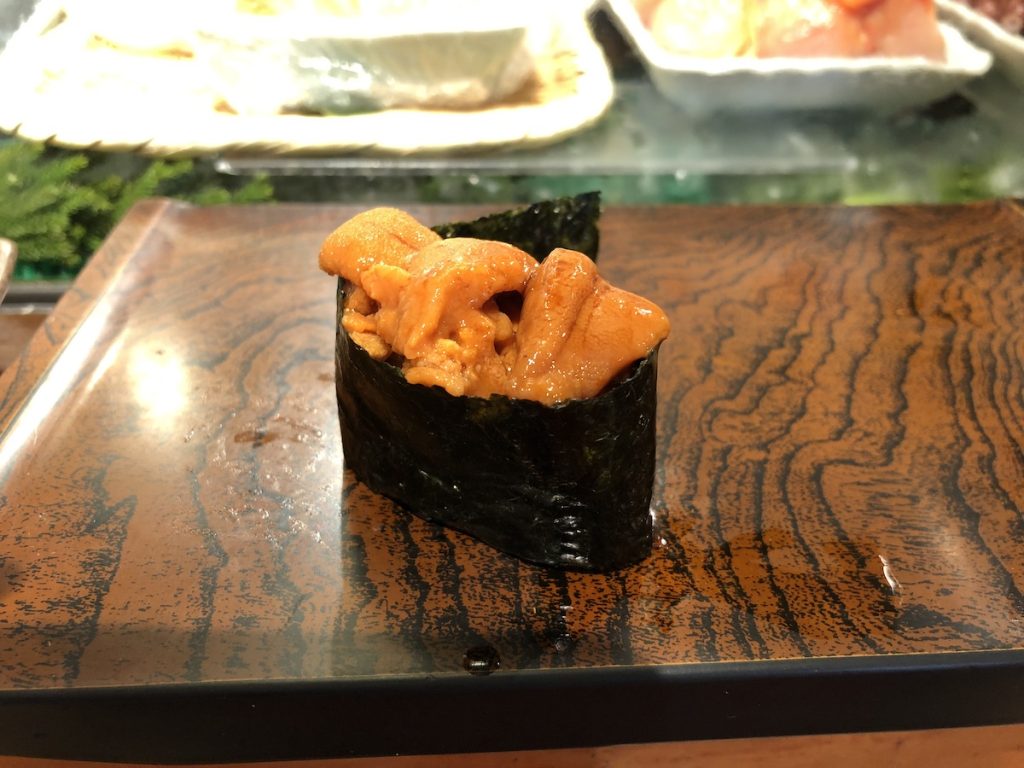
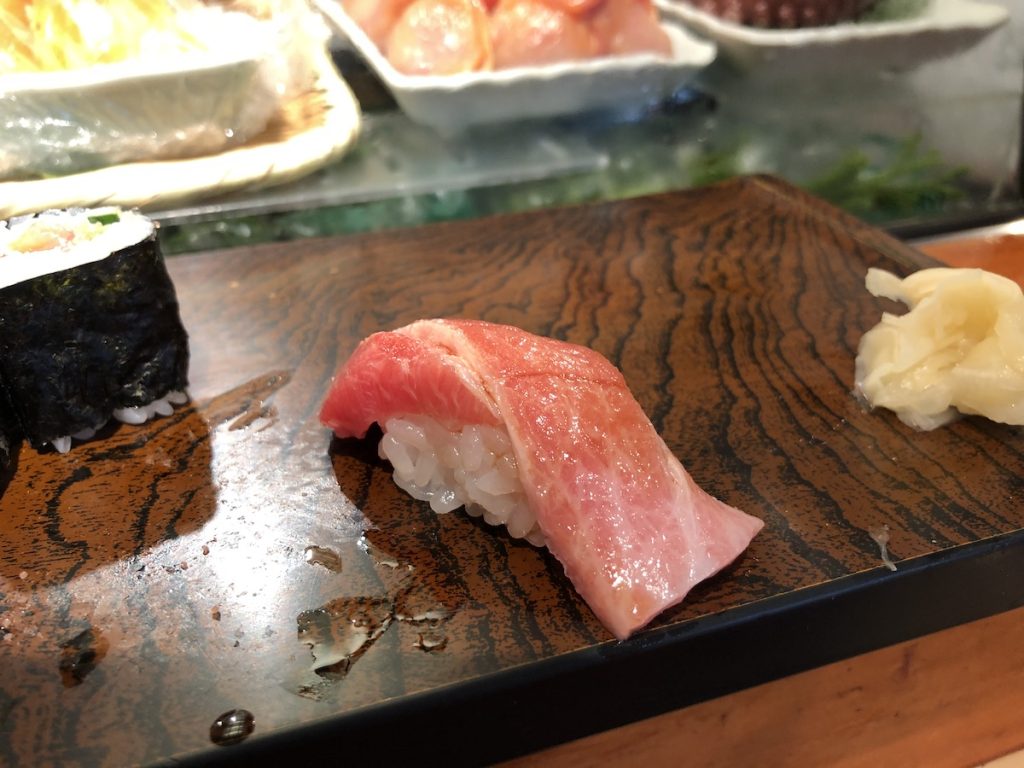
Okay, I have to stop. I’ve worked up a fearsome hunger with nothing to satisfy it but the stuff we brought back:
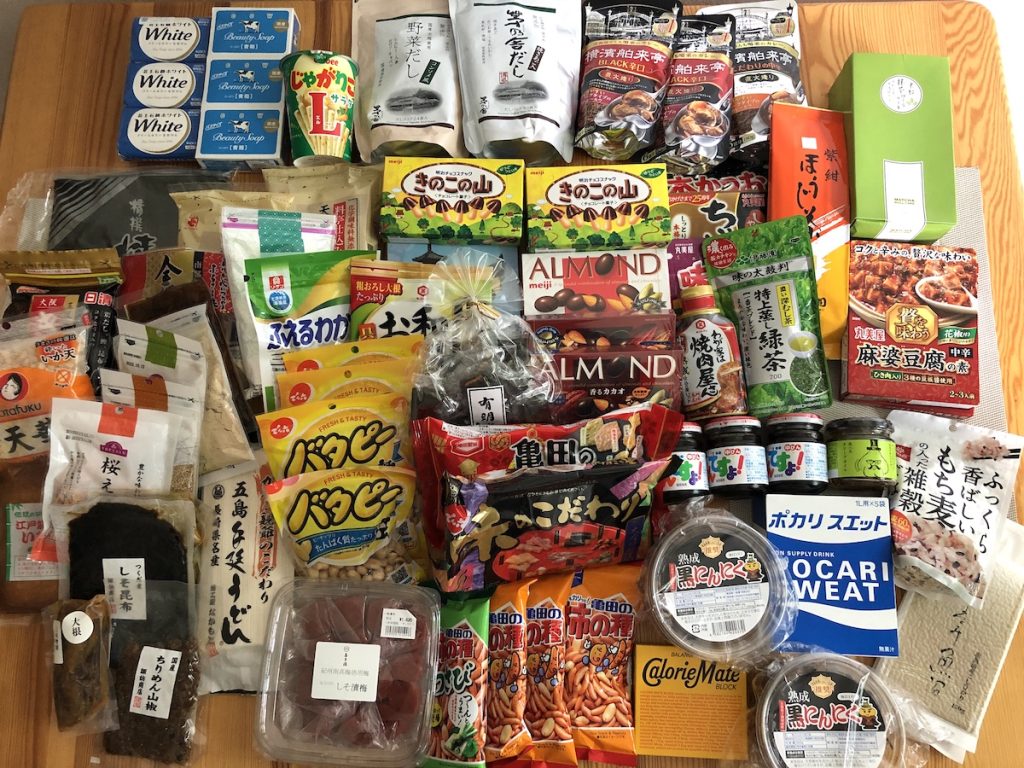
I hope you have a chance to visit Japan and try some of these foods for yourself.
If you go, please spare a thought for your humble scribe, and bring me back a jar of Gohan desu-yo.
